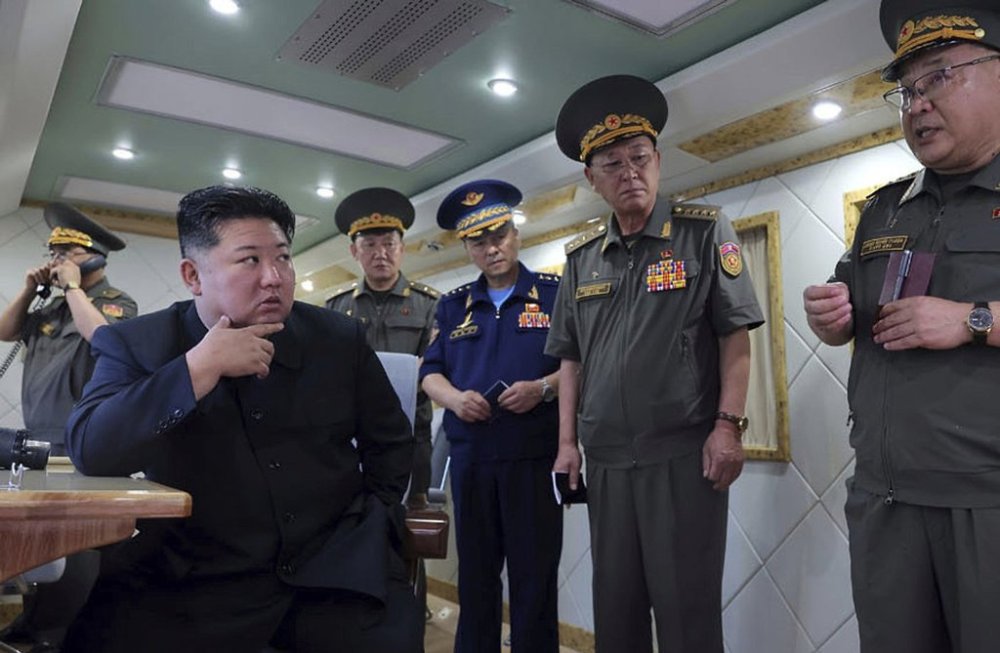North Korean leader Kim Jong Un supervises test of new antiair missiles
Advertisement
Read this article for free:
or
Already have an account? Log in here »
To continue reading, please subscribe:
Monthly Digital Subscription
$0 for the first 4 weeks*
- Enjoy unlimited reading on winnipegfreepress.com
- Read the E-Edition, our digital replica newspaper
- Access News Break, our award-winning app
- Play interactive puzzles
*No charge for 4 weeks then price increases to the regular rate of $19.00 plus GST every four weeks. Offer available to new and qualified returning subscribers only. Cancel any time.
Monthly Digital Subscription
$4.75/week*
- Enjoy unlimited reading on winnipegfreepress.com
- Read the E-Edition, our digital replica newspaper
- Access News Break, our award-winning app
- Play interactive puzzles
*Billed as $19 plus GST every four weeks. Cancel any time.
To continue reading, please subscribe:
Add Free Press access to your Brandon Sun subscription for only an additional
$1 for the first 4 weeks*
*Your next subscription payment will increase by $1.00 and you will be charged $16.99 plus GST for four weeks. After four weeks, your payment will increase to $23.99 plus GST every four weeks.
Read unlimited articles for free today:
or
Already have an account? Log in here »
SEOUL, South Korea (AP) — North Korean leader Kim Jong Un supervised the test-firing of two types of new antiair missiles, state media said Sunday, displaying his expanding military capabilities as the South Korean and U.S. militaries carry out joint drills.
The North’s official Korean Central News Agency said the test Saturday proved the missiles effective in countering aerial threats such as drones and cruise missiles, and that Kim assigned unspecified “important” tasks to defense scientists ahead of a major political conference expected early next year.
The report did not specify the missiles that were tested or where the event took place. It did not mention any remarks by Kim directed at Washington or Seoul.

The test coincided with new South Korean President Lee Jae Myung ’s trip to Tokyo for a summit with Japanese Prime Minister Shigeru Ishiba, where they vowed to strengthen bilateral cooperation and their trilateral partnership with the United States to address common challenges, including North Korea’s nuclear ambitions. Lee was to depart for Washington on Sunday for a summit with U.S. President Donald Trump.
Kim’s government has repeatedly dismissed calls by Seoul and Washington to restart long-stalled negotiations aimed at winding down his nuclear weapons and missiles programs, as he continues to prioritize Russia as part of a foreign policy aimed at expanding ties with nations confronting the United States.
Since Russia’s invasion of Ukraine, Kim has sent thousands of troops and large shipments of weapons, including artillery and ballistic missiles, to help fuel President Vladimir Putin’s warfighting.
That has raised concerns Moscow could provide technology that strengthens Kim’s nuclear-armed military, with experts pointing to North Korea’s aging antiair and radar systems as a likely area of cooperation. South Korea’s previous conservative government said in November that Russia supplied missiles and other equipment to help strengthen air defenses of the North Korean capital of Pyongyang, but did not specify which systems were provided. Kim held a ceremony in Pyongyang last week to honor North Korean soldiers who fought in Ukraine, awarding state “hero” titles to those who returned and placing medals beside 101 portraits of the fallen, praising them as “great men, great heroes and great patriots,” state media reported. According to South Korean assessments, North Korea has sent around 15,000 troops to Russia since last fall and about 600 of them have died in combat. Kim has also agreed to send thousands of military construction workers and deminers to Russia’s Kursk region, a deployment South Korean intelligence believes could happen soon.

